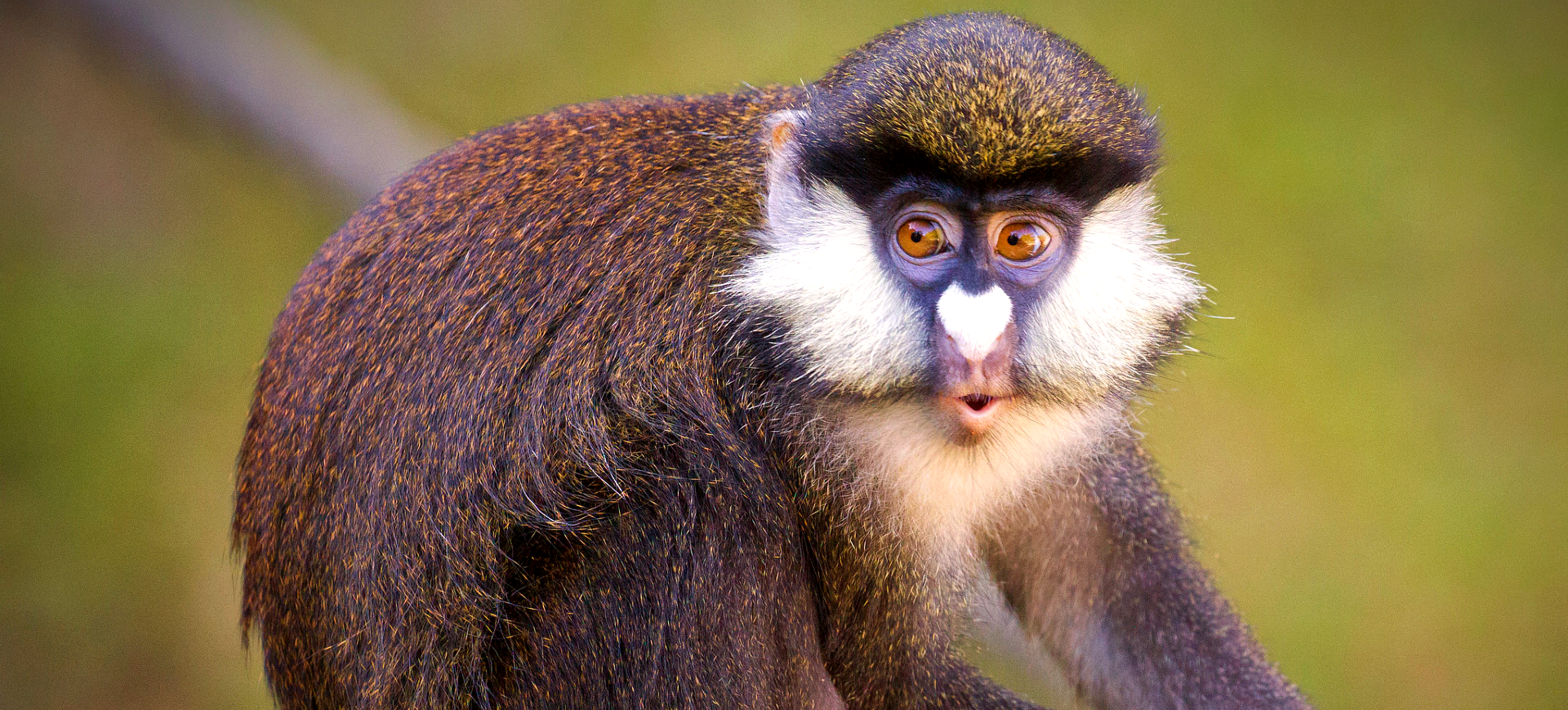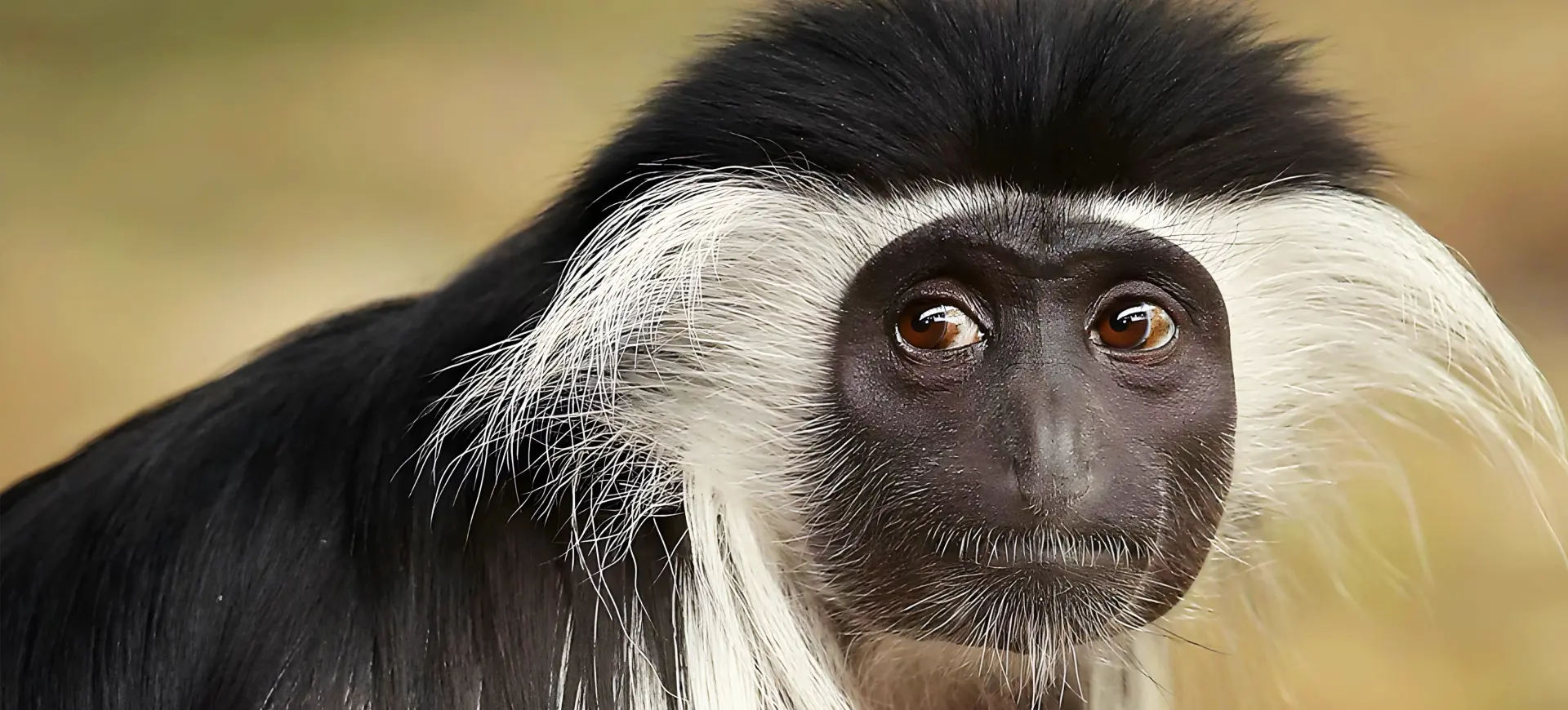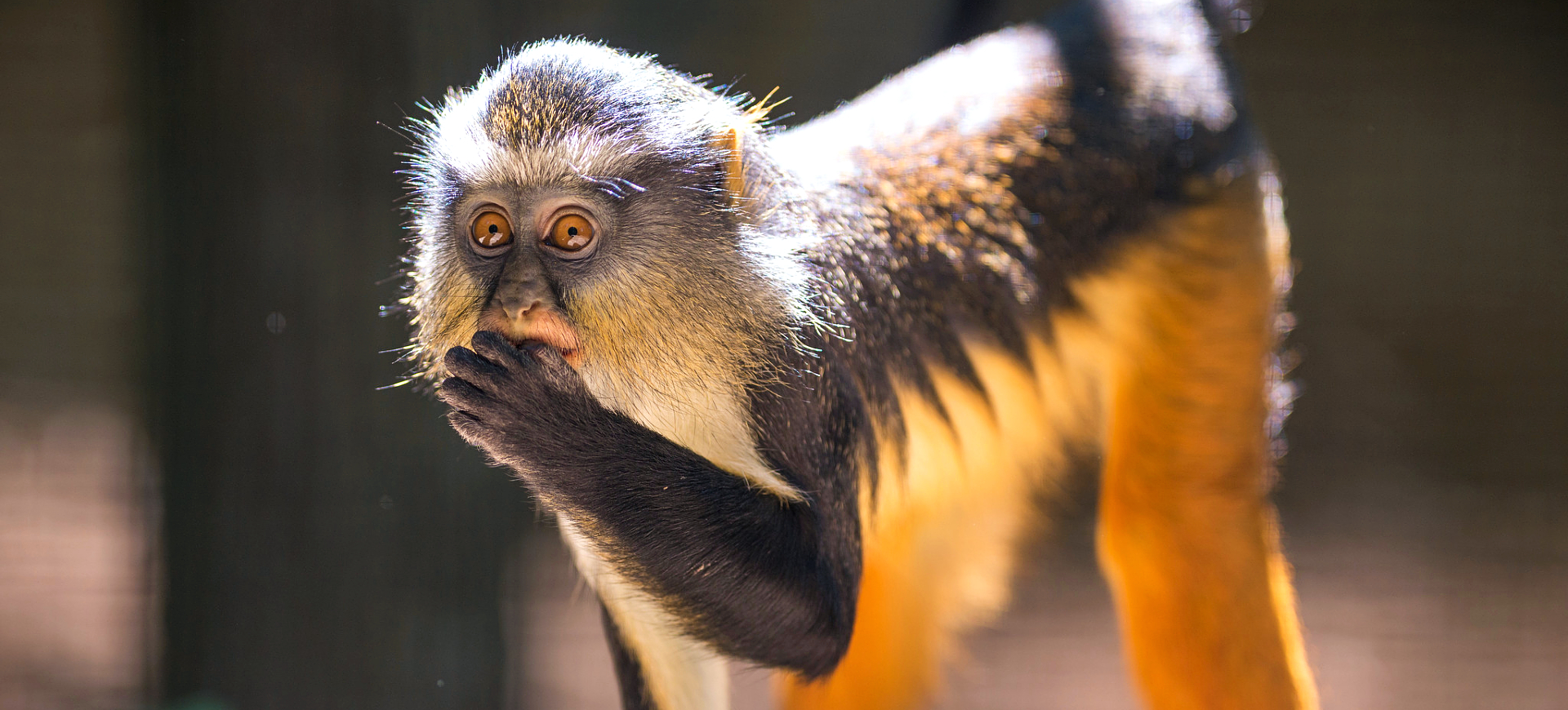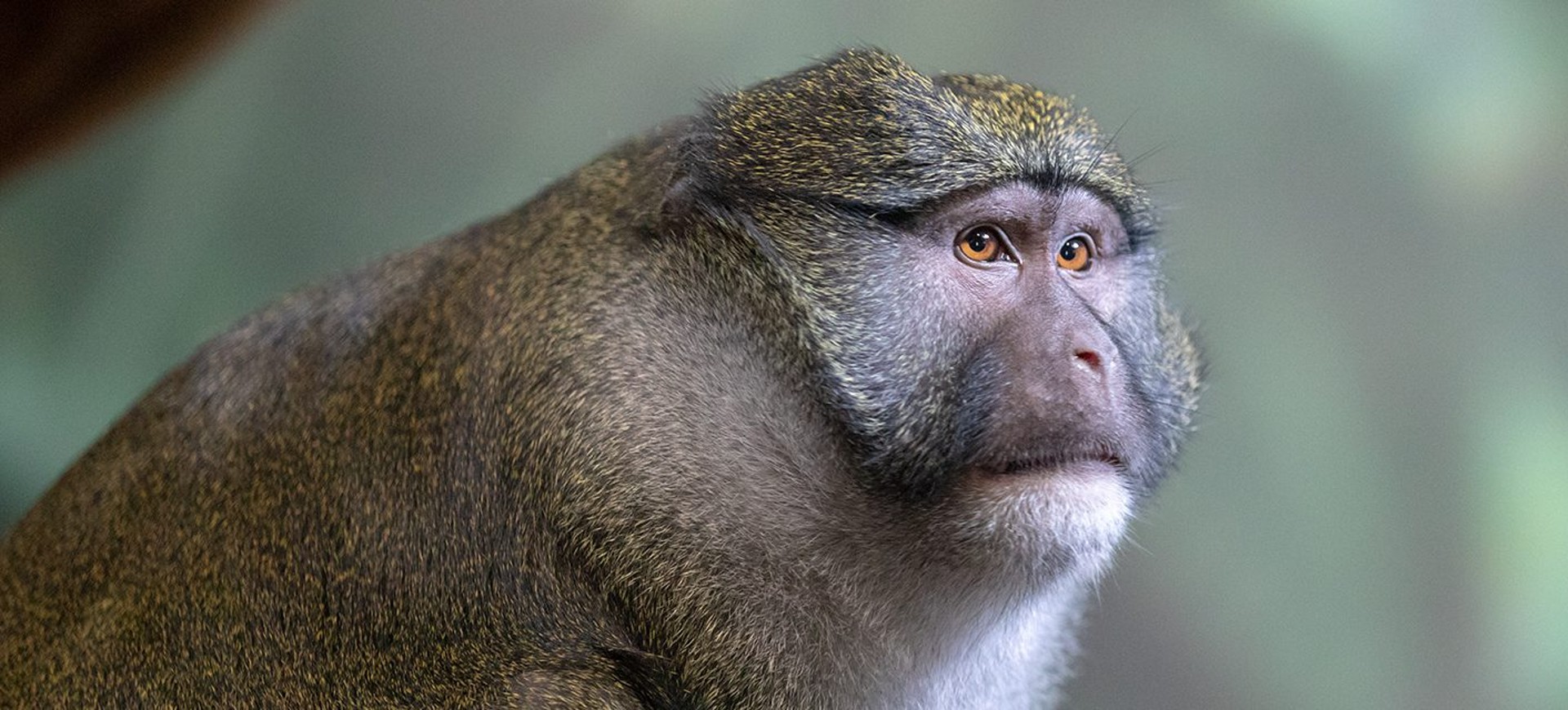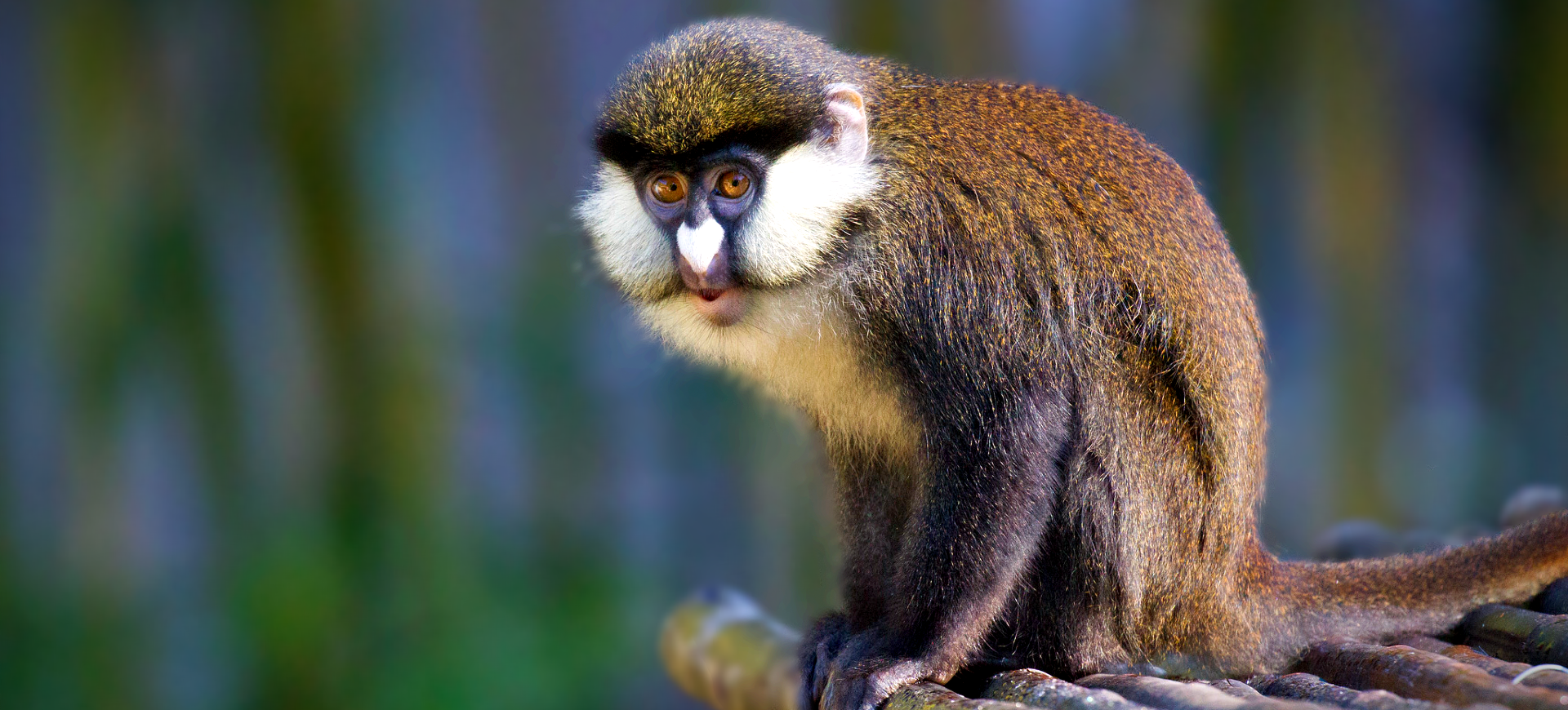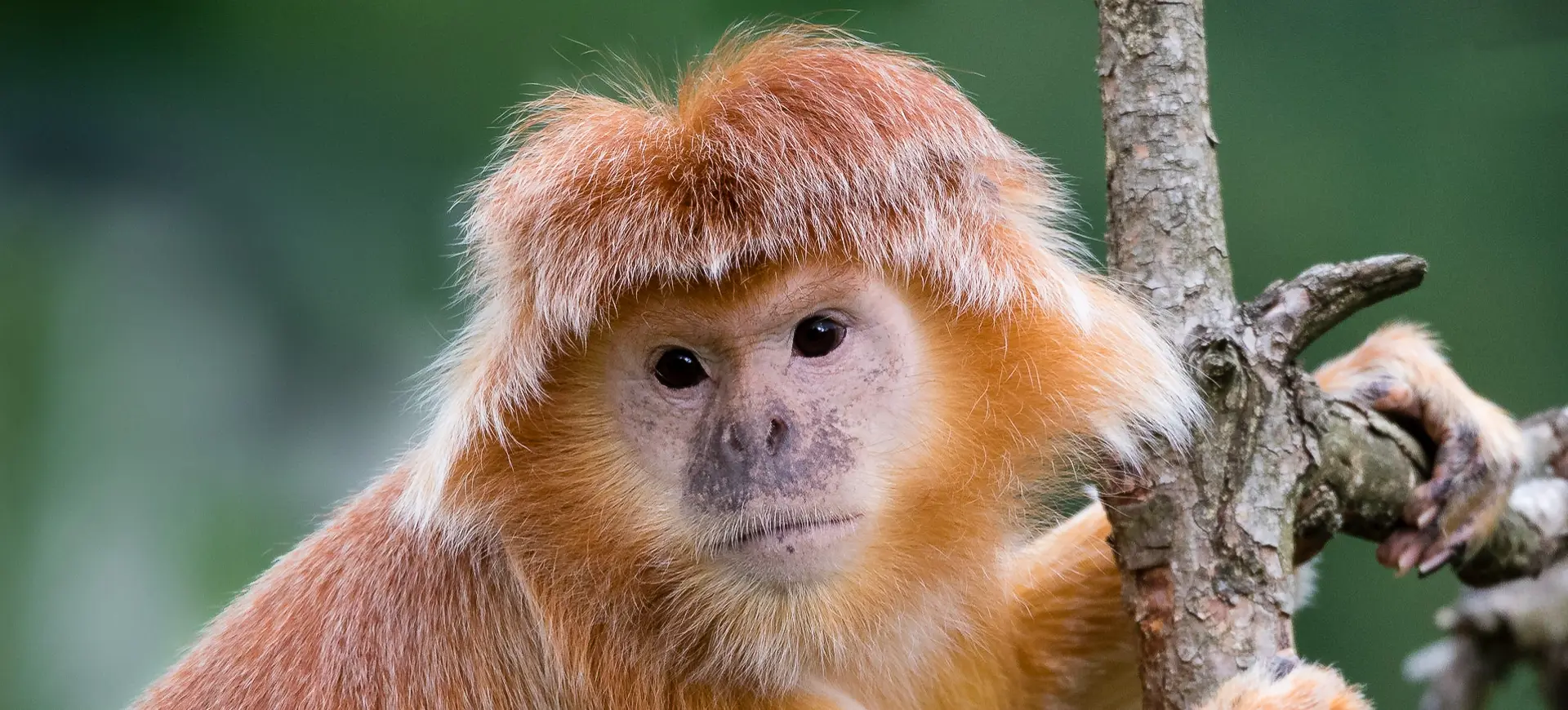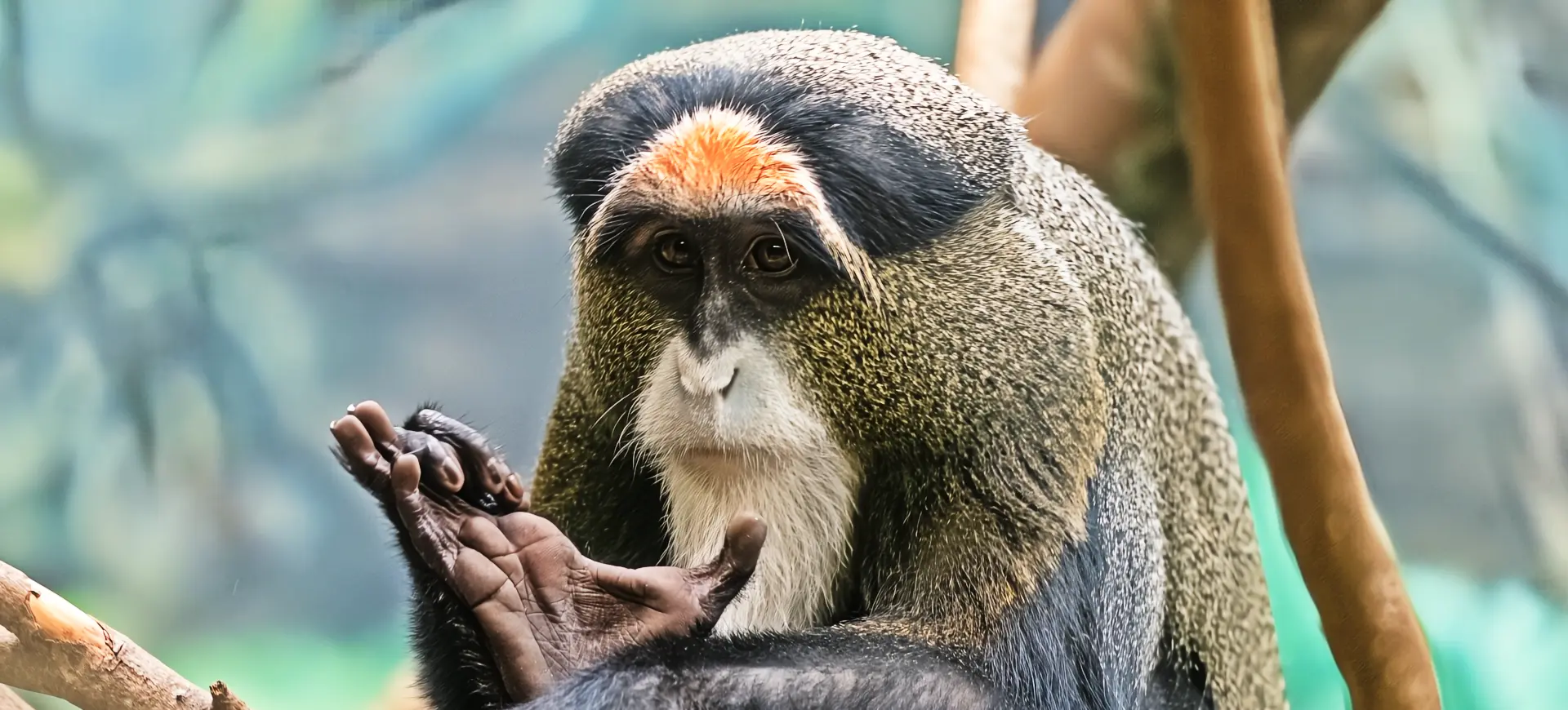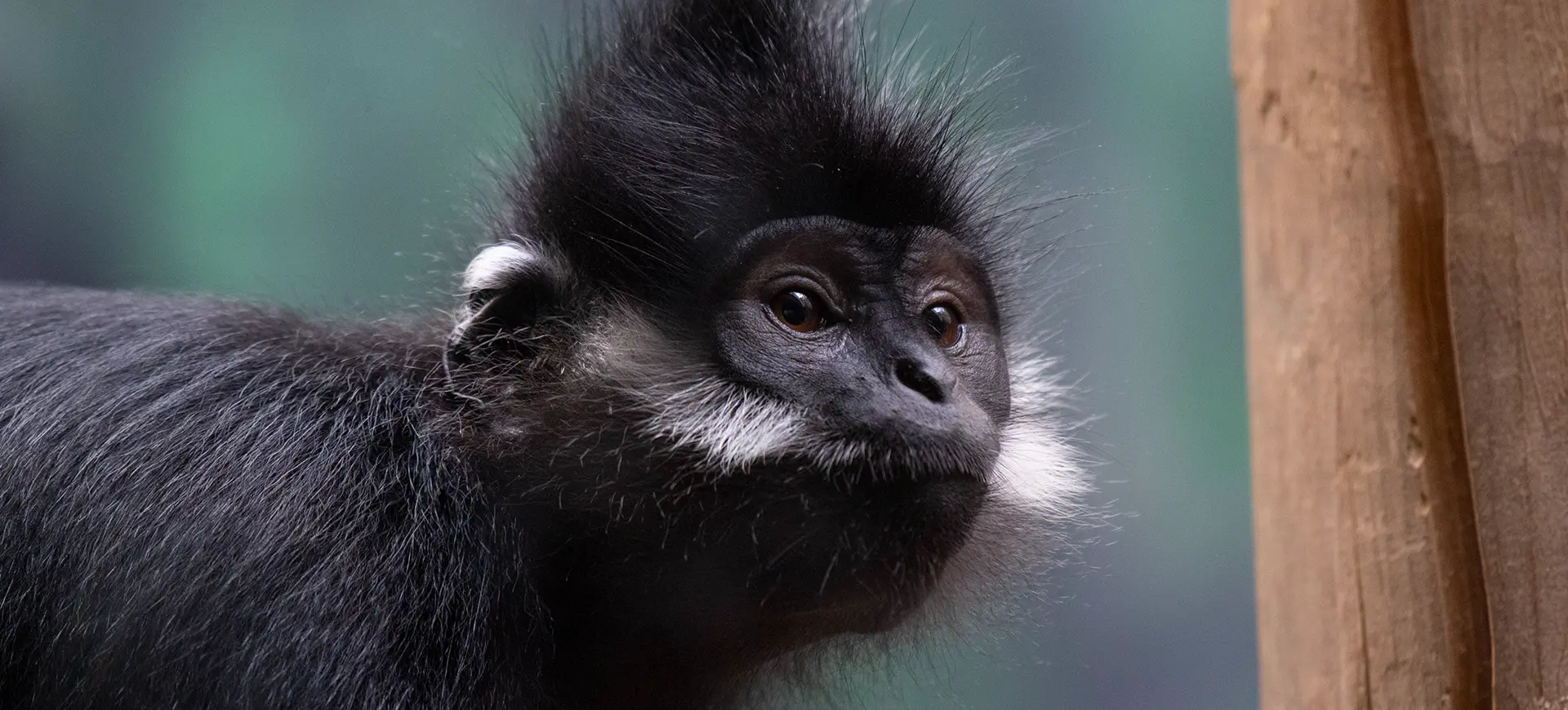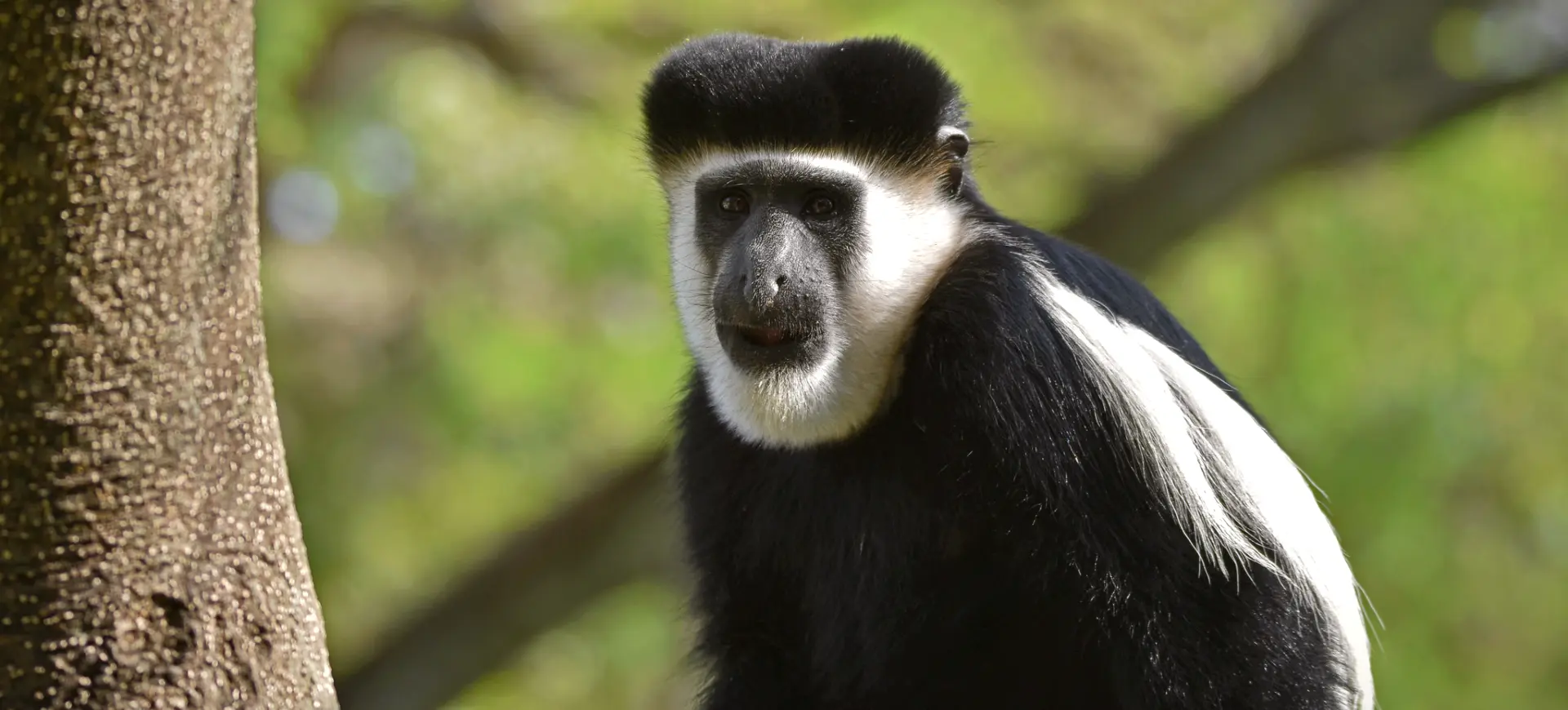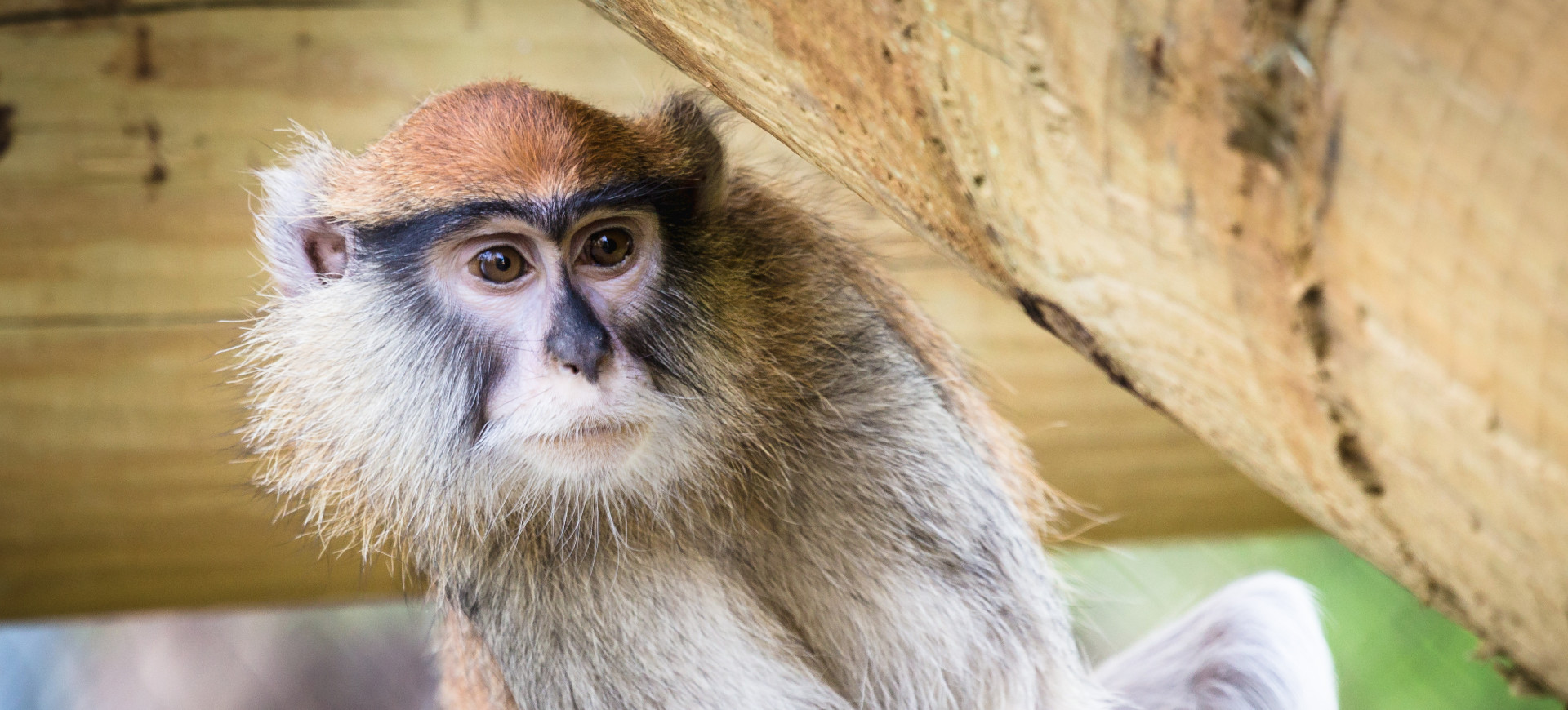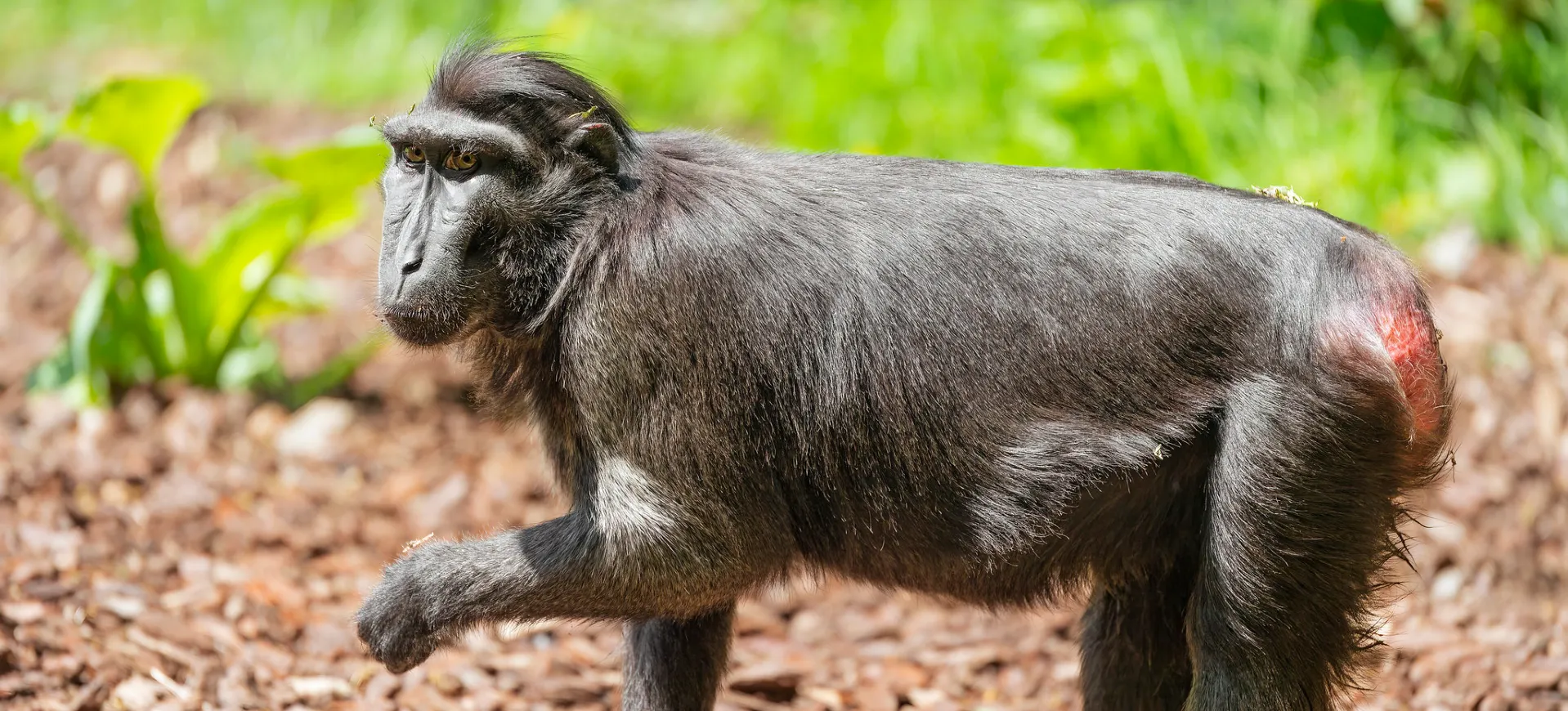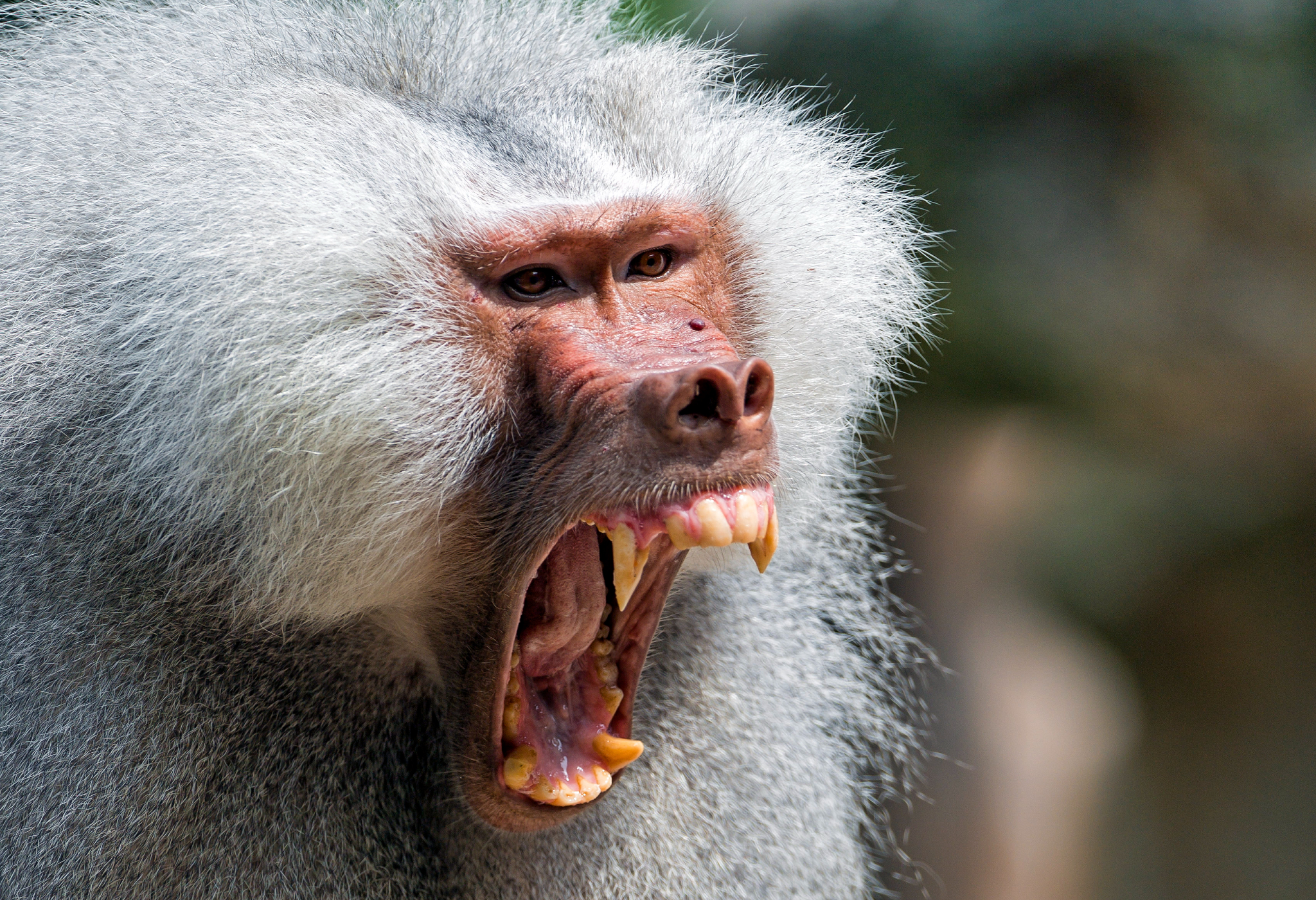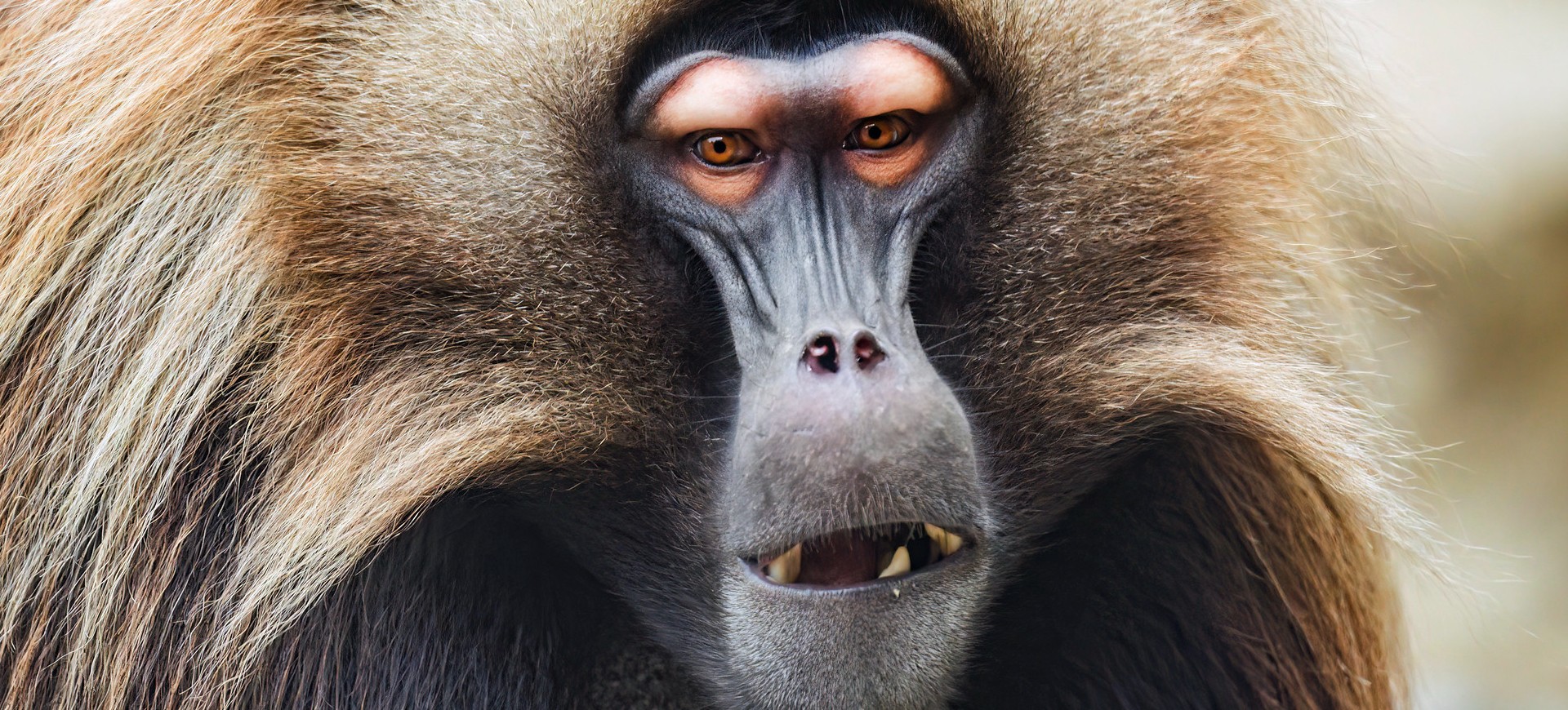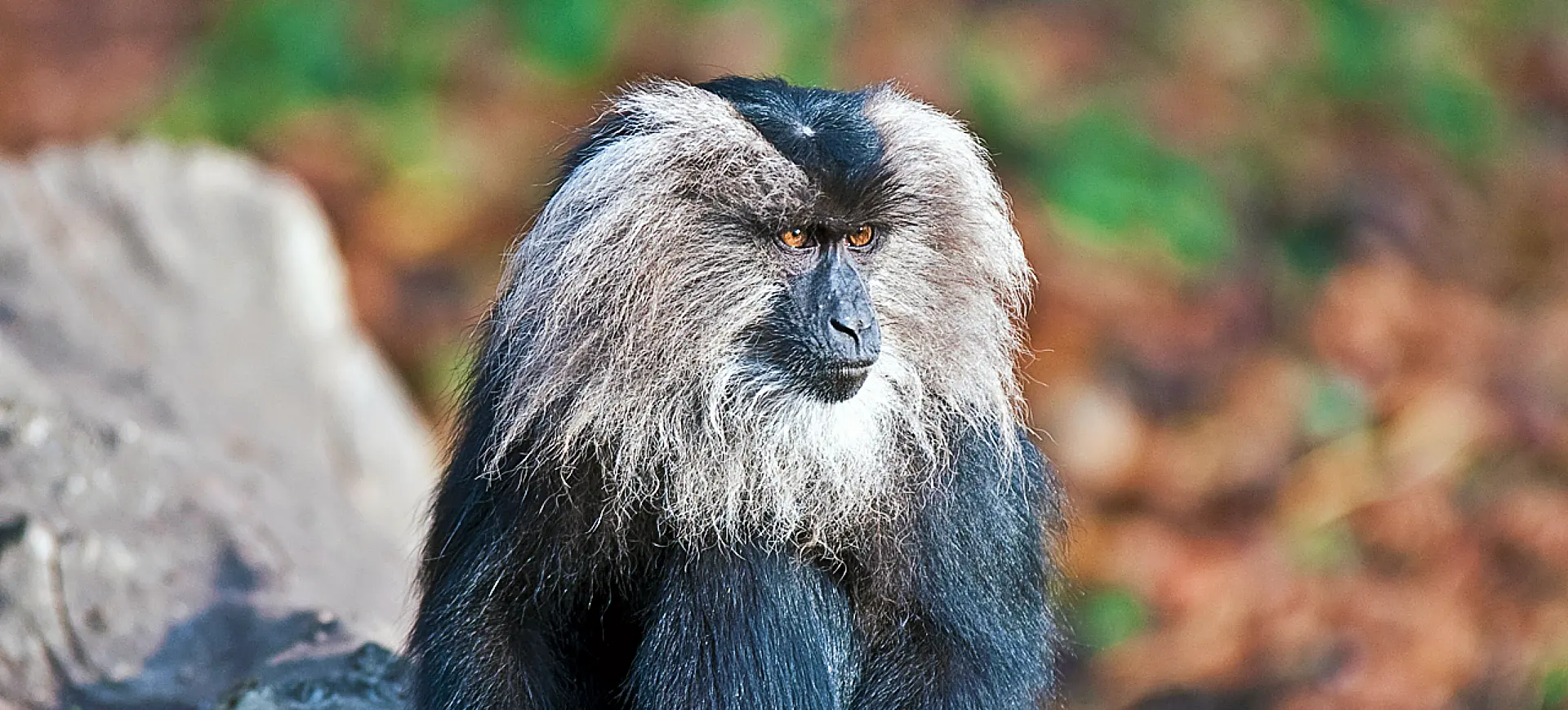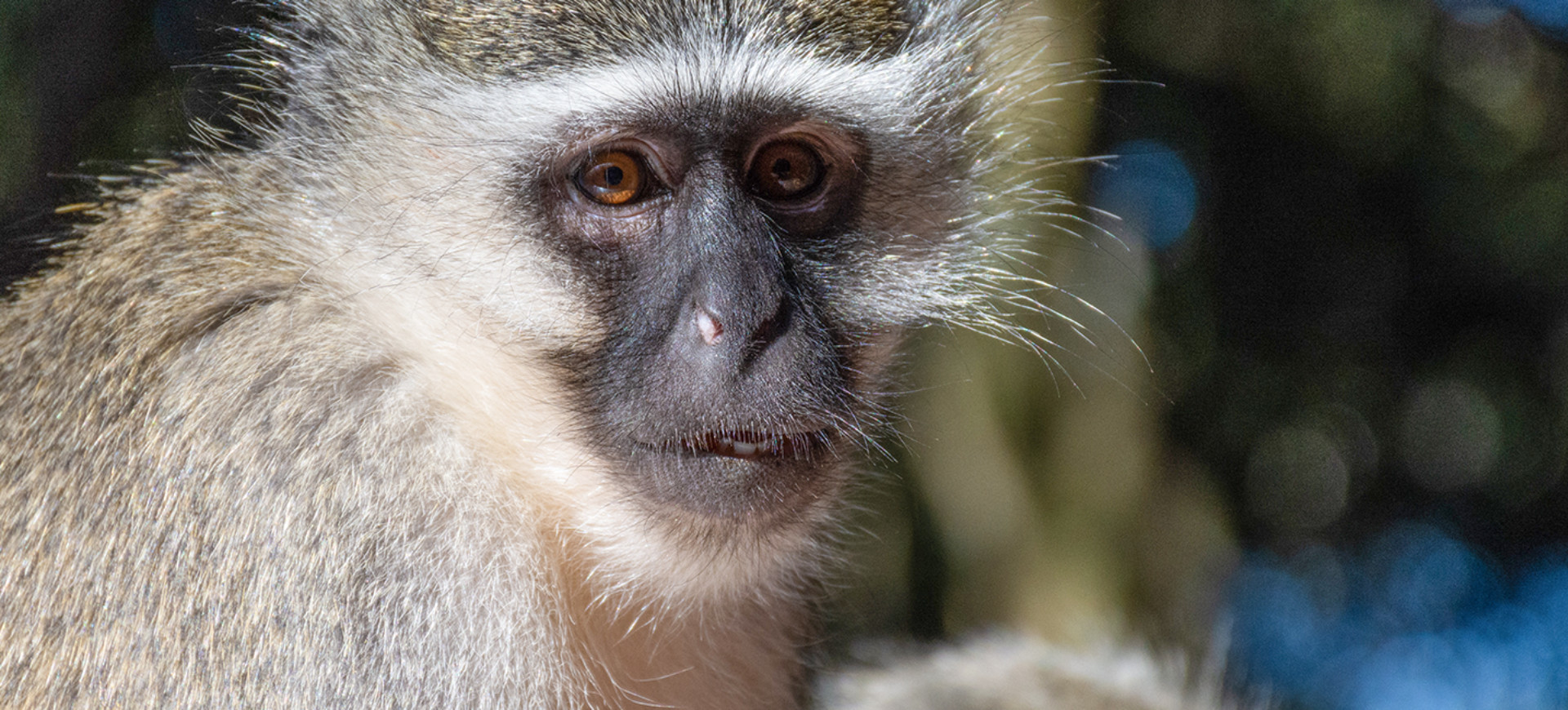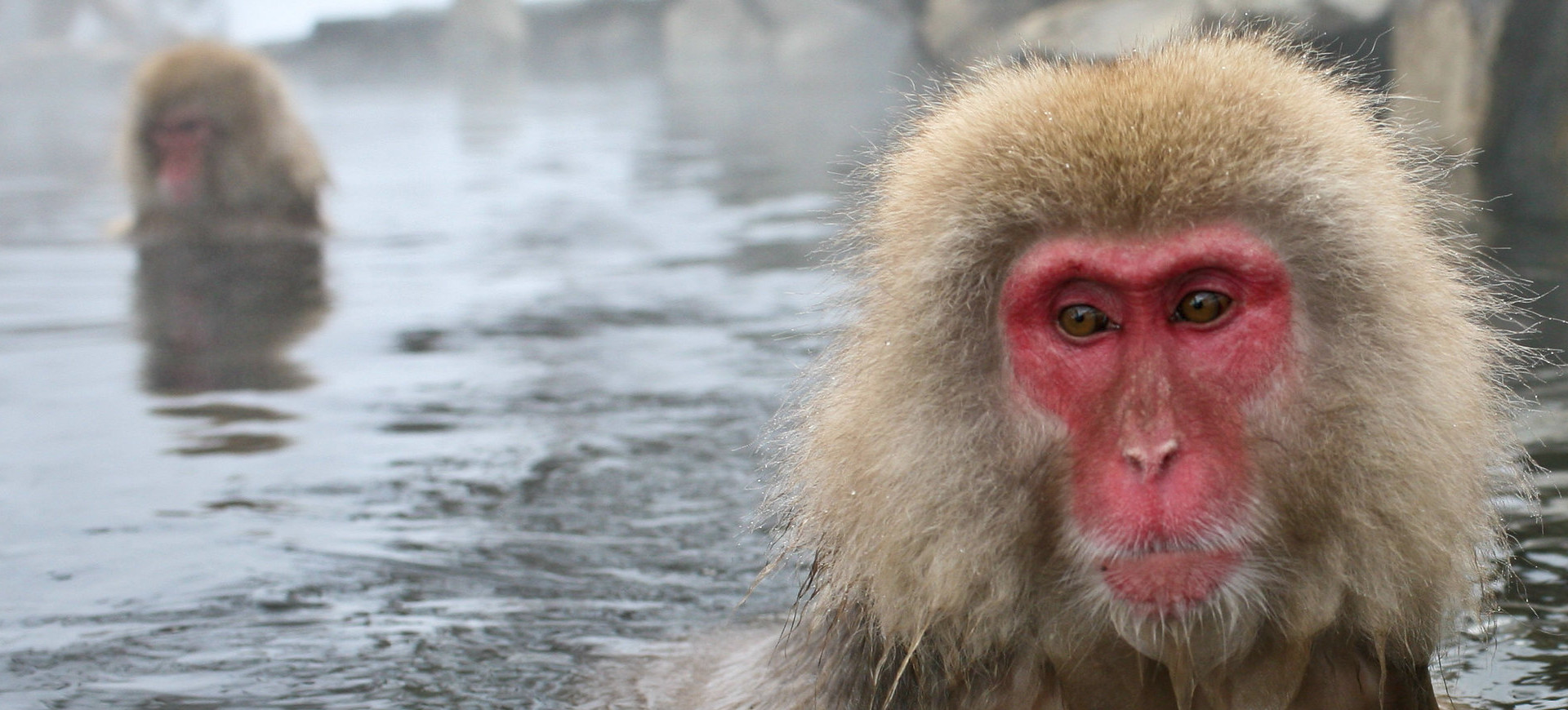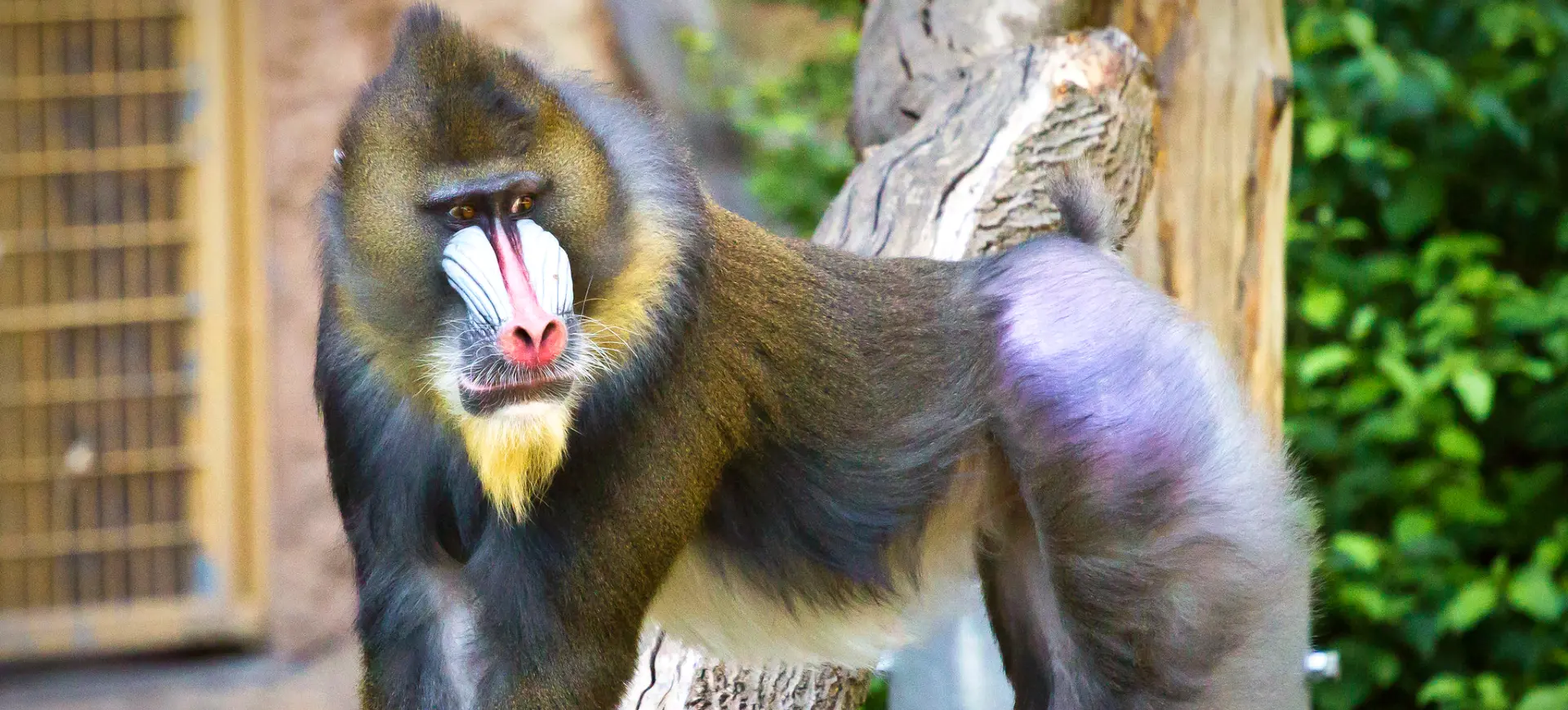Overview
The Angolan colobus (Colobus angolensis), also known as the Angolan black-and-white colobus, is a strikingly beautiful primate recognized by its glossy black fur contrasted with long, white fringes of hair on its shoulders, tail, and face. This arboreal monkey is native to the dense tropical and subtropical forests of Central and East Africa, where it spends most of its life in the forest canopy. The species is non-prehensile and relies on powerful legs to leap between trees, sometimes over 50 feet. As a folivore, the Angolan colobus plays a crucial ecological role by consuming large quantities of leaves and aiding in the cycling of nutrients within its forest habitat.
Angolan colobus monkeys are social animals that live in groups of 5 to 20 individuals, typically consisting of a dominant male, several females, and their offspring. Their peaceful and cohesive social structure minimizes conflict within the group and enhances their ability to avoid predators. These primates communicate through vocalizations, including loans and grunts, and visual cues, such as body posture and grooming behaviors. Despite their name, not all Angolan colobus populations are restricted to Angola; they have a wide geographic distribution across several countries in sub-Saharan Africa.
While they are generally adaptable and can inhabit a variety of forest types, Angolan colobus monkeys are increasingly threatened by habitat destruction due to logging, agriculture, and human encroachment. They are also hunted for bushmeat and traditional medicine in some areas, reducing their numbers. Conservation efforts, including establishing protected reserves and community education programs, are essential to ensuring the survival of this species. Despite these challenges, the Angolan colobus remains a fascinating example of adaptation to forest life, with its unique appearance and behavior capturing the attention of researchers and wildlife enthusiasts alike.
Taxonomy
Kingdom
Phylum
Class
Order
Family
Genus
Species
Type
Current distribution:
The Angolan colobus monkey, a distinctive primate, inhabits a wide range in Africa, spanning several countries. Its distribution stretches from Nigeria in the western part of the continent, traversing through the Central African Republic and the Democratic Republic of Congo. It extends further eastward into Uganda, Kenya, and Tanzania. This expansive range highlights the species' adaptability to different forest environments. The Angolan colobus is known for its striking black and white fur and is primarily arboreal, spending most of its time in the forest canopy.
However, despite its broad geographic spread, the Angolan colobus monkey faces challenges due to habitat fragmentation. Populations are often isolated in patches of suitable habitat, surrounded by expanding human settlements and agricultural lands. This fragmentation and ongoing deforestation threaten their survival by reducing and isolating their natural habitats. Consequently, while they have managed to sustain populations across a large area, the loss of forest cover and the resultant habitat isolation continue to impact these primates adversely.
Physical Description:
A black body with white sections characterizes the Angolan colobus. This includes a mantled white cape draping over its shoulders and back, long white fringes on its thighs, and a fully white, bushy tail that often exceeds its body length. These white sections starkly contrast against its black body, providing it with its common name, the black-and-white colobus. A halo of white fur frames its face, and its eyes are large, brown, and expressive.
Despite being thumbless, the Angolan colobus has long, strong fingers facilitating impressive talent in the trees. Their bodies are slim and aerodynamic, with long limbs built for acrobatic navigation in the forest canopy. Both sexes have a similar appearance, though males are generally larger and heavier than females.

Lifespan: Wild: ~20 Years || Captivity: ~30 Years

Weight: Male: 22–30 lbs (10–14 kg) || Female: 18–26 lbs (8–12 kg)

Length: Male: 36–43 in (91–109 cm) || Female: 34–40 in (86–102 cm)

Height: Male: 25–27 in (64–69 cm) || Female: 22–24 in (56–61 cm)

Top Speed: 35 mph (56 km/h)
Characteristic:
Native Habitat:
The Angolan colobus naturally inhabits a broad range of forested environments. It is particularly adept at life in the high canopy of primary and secondary tropical rainforests, riverine forests, and woodlands. It has been observed in montane forests up to altitudes of 3,000 meters, demonstrating notable adaptability to diverse habitats.
Due to the monkey’s folivorous diet, areas with a high abundance of trees are crucial. These environments provide sustenance, serve as shelter, and facilitate their highly arboreal lifestyle. Despite the ability to adapt to varying forest types, the Angolan colobus predominantly relies on mature, old-growth forests with rich biodiversity.
Climate Zones:
Biomes:
Biogeographical Realms:
Continents:
Diet:
Diet & Feeding Habits:
The Angolan colobus has a diet mainly comprised of leaves, making it a folivore. Its large, multichambered stomach functions like a fermentation vat, allowing it to break down and extract nutrients from leaves that other primates would struggle to digest. This unique digestive system can detoxify some toxic compounds in certain leaves, enabling a wider dietary range.
In addition to leaves, this species consumes fruits, seeds, flowers, and occasionally insects. Its daily diet heavily depends on resource availability within its habitat. These animals are diurnal, and most of their feeding occurs in the morning and late afternoon.
Mating Behavior:
Mating Description:
The Angolan colobus exhibits a polygynous mating system in which a single dominant male mates with multiple females in the group. Mating can occur throughout the year, but it is often more frequent during periods of higher rainfall when food is abundant. Sexual maturity is reached between 4-5 years for females and a little later for males.
Males often display courtship behavior, such as grooming, to win over females. Once pregnant, the female will gestate for around 180 days before giving birth to a single offspring. Mothers receive assistance from other females in the group, particularly in alloparenting, where group members are responsible for caring for infants.
Reproduction Season:
Birth Type:
Pregnancy Duration:
Female Name:
Male Name:
Baby Name:
Social Structure Description:
The Angolan colobus lives in social groups consisting of one adult male, multiple females, and their offspring. These groups, which can number up to 15 individuals, are characterized by cooperative behavior and a lack of aggression. Social interactions within the group include grooming, play, and shared infant care, which is particularly important for the survival of newborns.
Despite living in relatively harmonious groups, the Angolan colobus does exhibit territorial behavior. Males emit loud calls to establish their territory and ward off rival males. Interactions between different groups are typically peaceful, but conflicts can occur, particularly over resource access in times of scarcity.
Groups:
Conservation Status:
Population Trend:
The Angolan colobus monkey is currently listed as Vulnerable on the IUCN Red List. The wild population is believed to be declining and is estimated to be less than 30,000 individuals. The main threats facing this species are habitat loss due to deforestation for agriculture and logging, hunting for bushmeat, and the illegal pet trade.
Despite these threats, there are still substantial populations in some protected areas. However, many populations exist outside these protected areas and are at high risk from habitat degradation and hunting. Conservation actions are being implemented in many regions to protect the species and its habitat, but a lack of resources and political will often hampers these efforts.
Population Threats:
The main threats to the Angolan colobus are habitat loss and hunting. Deforestation for agriculture, logging, and human settlement are all factors that have resulted in a significant loss of habitat for the species. The monkey is also hunted for its meat and fur; in some areas, it is captured for the illegal pet trade.
Increasing human populations and expanding agriculture are exacerbating these threats. As forests are cleared for farming or development, the Angolan colobus is losing its home and food sources. Even in areas where forests still exist, they are often fragmented, leading to isolated populations vulnerable to inbreeding and lack of genetic diversity.
Conservation Efforts:
Conservation efforts for the Angolan colobus are primarily focused on habitat preservation and establishing protected areas. This includes enforcing anti-poaching laws and promoting sustainable agricultural practices to reduce deforestation. Education initiatives are also in place in many regions to raise awareness about the importance of the species and its role in the ecosystem.
Several zoos and conservation organizations worldwide support Angolan colobus conservation through funding, research, and breeding programs. While these efforts have had some success, continued support and resources are needed to ensure the species long-term survival.
Additional Resources:
Fun Facts
- The Angolan colobus has a multi-chambered stomach, similar to a cow, allowing it to digest tough leaves.
- Despite having no thumbs, they are incredibly agile, easily swinging through the trees.
- They have a cape of long white hairs on their shoulders and back, earning them the nickname “skunk monkey.”
- Their tail is often as long as, if not longer than, their body.
- Females in the group often assist with the care of infants, a practice known as alloparenting.
- They are known for their loud, territorial calls that can be heard for up to 2 km.
- Despite being primarily leaf-eaters, they occasionally eat insects.
- They have been observed at altitudes of up to 3,000 meters.
- The fur of the Angolan colobus has been used in the creation of dance costumes for certain African tribes.
- They can leap as far as 20 feet (6 meters) in a single bound.








